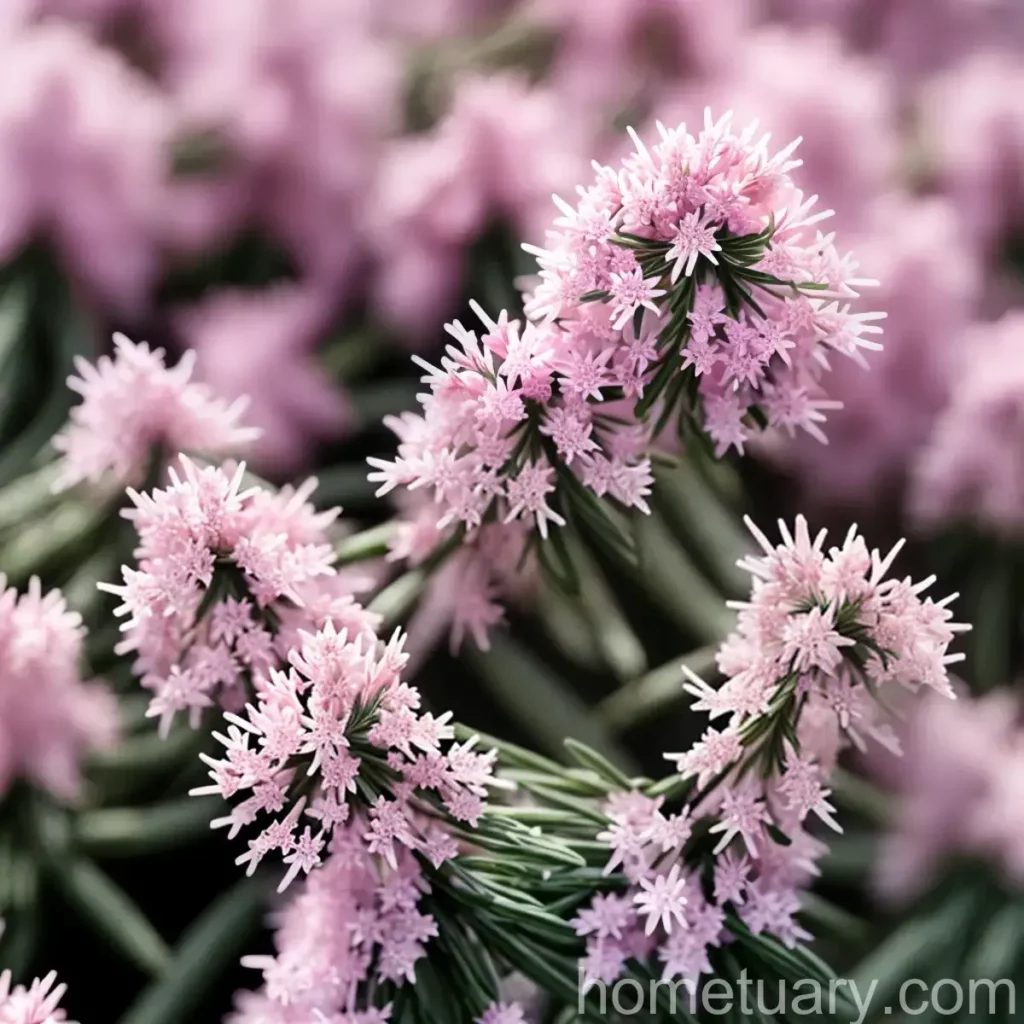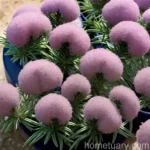Winter Heath (Erica carnea ‘Springwood Pink’): A Complete Guide
In the world of gardening, winter heath, scientifically known as Erica carnea, especially the ‘Springwood Pink’ variety, holds a special place due to its enchanting pink flowers that bloom during the winter months. As a plant scientist, I am thrilled to share a comprehensive guide to this fascinating plant, covering its culture, uses, care tips, and much more.
What is Winter Heath (Erica carnea ‘Springwood Pink’)?
Winter heath, or Erica carnea ‘Springwood Pink’, is a delightful evergreen flowering plant that belongs to the Ericaceae family. This plant is native to the mountainous regions of Europe and is well-adapted to thrive in colder climates. It is a low-growing, spreading shrub, renowned for its ability to bloom during the winter, adding vibrant color to gardens when most other plants are dormant.
Key Takeaways – Winter Heath (Erica carnea ‘Springwood Pink’)
Before delving into the details, let’s highlight the key takeaways about winter heath (Erica carnea ‘Springwood Pink’):
- Winter-flowering perennial plant
- Evergreen and low-growing
- Thrives in cold climates
- Beautiful pink flowers
- Suitable for containers and landscaping
- Hardy and low-maintenance
- Attracts pollinators
- Resistant to deer
- Effective ground cover
- Ideal for rock gardens and alpine settings
With these takeaways in mind, let’s explore the various aspects of winter heath, from its culture to common diseases and maintenance tips.
Culture
Uses
- Winter heath (Erica carnea ‘Springwood Pink’) has a myriad of uses attributed to its unique characteristics. Some of its primary uses include:
- Ornamental gardening
- Landscaping in rock gardens
- Ground cover in alpine settings
- Container gardening
- Pollinator-friendly gardens
- Deer-resistant plantings
- Erosion control on slopes
- Adding winter color to small gardens
Water
- Adequate watering is crucial for the healthy growth of winter heath, especially during its initial establishment phase. Once established, it is relatively drought-tolerant.
- Watering frequency: Once or twice a week during dry spells
- Watering method: Direct water at the base to avoid wetting foliage
- Soil moisture: Well-draining soil to prevent waterlogging
Sunlight
- Winter heath thrives in full sun to partial shade, making it adaptable to a range of light conditions.
- Ideal sunlight: 4-6 hours of direct sunlight per day
- Tolerant of light shade: Suitable for shaded areas with dappled sunlight
Fertilizer
- Due to its low-nutrient requirements, winter heath necessitates minimal fertilization.
- Fertilizer type: Balanced, slow-release fertilizer
- Fertilizer schedule: Apply in early spring before new growth emerges
Soil
- Optimal soil conditions are paramount for the health and vigor of winter heath.
- Soil type: Well-draining, acidic soil
- Soil amendments: Organic matter such as peat moss or compost
- pH range: Acidic soil with a pH of 5.0-6.0
Pruning
- Pruning plays a vital role in rejuvenating winter heath and promoting abundant flowering.
- Pruning time: Early spring immediately after flowering
- Pruning method: Light trimming to shape and remove spent flowers
- Pruning frequency: Yearly maintenance pruning
Propagation
- Winter heath can be propagated through various methods, enabling gardeners to expand their plantings.
- Propagation techniques: Division, cuttings, and seed propagation
- Propagation time: Best carried out in early spring or late summer
Container Popularity
- Winter heath, particularly the ‘Springwood Pink’ variety, is highly sought after for container gardening.
- Container type: Well-draining, slightly acidic potting mix
- Container size: Suitable for small to medium-sized containers
- Container care: Regular watering and limited fertilization
Common Diseases
- While winter heath is relatively resistant to diseases, it may encounter certain issues under unfavorable conditions.
- Common diseases: Phytophthora root rot, powdery mildew
- Disease prevention: Proper watering and well-draining soil
- Disease treatment: Fungicidal treatments for severe cases
Disease Diagnosis
- Timely diagnosis of diseases is essential in preventing the spread of infections and preserving the plant’s health.
- Symptoms to watch for: Wilting, yellowing foliage, powdery patches
- Diagnostic measures: Consultation with local extension services or plant professionals
Common Pests
- Despite its hardiness, winter heath is susceptible to certain pests that can affect its growth and vigor.
- Common pests: Heather beetle, spider mites
- Pest control: Natural predators, horticultural oils, or insecticidal treatments as needed
Botanist’s Tips
As a plant scientist, I have some specific tips to offer for the successful cultivation and enjoyment of winter heath (Erica carnea ‘Springwood Pink’):
- Ensure well-draining soil to prevent root rot.
- Prune the plant lightly to maintain a compact shape.
- Avoid excessive fertilization to prevent nutrient imbalances.
- Monitor for signs of pests and diseases regularly.
- Introduce companion plants that thrive in similar conditions to create visually appealing landscapes.
- Incorporate winter heath into pollinator-friendly garden designs to support biodiversity.
Fun Facts
Let’s explore some intriguing facts about winter heath (Erica carnea ‘Springwood Pink’):
- The genus name “Erica” is derived from the Greek word “ereike,” meaning heath or heather.
- Winter heath is a source of nectar for early bees and pollinators, contributing to early-season biodiversity.
- It has been cultivated in gardens since the 18th century, showcasing its enduring popularity.
- The resilient and cold-hardy nature of winter heath makes it a beloved plant for challenging climates.
Links to External Resources
For further exploration of winter heath and related topics, I recommend the following resources:
- Royal Horticultural Society – Erica carnea
- Missouri Botanical Garden – Winter Heath
- University of Vermont Extension Department of Plant and Soil Science – Erica carnea
- American Rhododendron Society – Winter Heath and Heaths
- The American Phytopathological Society – Phytophthora Root Rot
In conclusion, winter heath (Erica carnea ‘Springwood Pink’) stands out as a resilient and captivating plant suitable for various garden settings. Its winter blooms, low-maintenance nature, and versatility make it a cherished addition to gardens around the world. By understanding its cultural needs, potential uses, and care requirements, gardeners can create beautiful and enduring landscapes enriched by the charm of winter heath.
I hope this guide serves as a valuable resource for enthusiasts and horticulturists seeking to explore the enchanting world of winter-flowering plants and the unique allure of Erica carnea ‘Springwood Pink’. Happy gardening!















